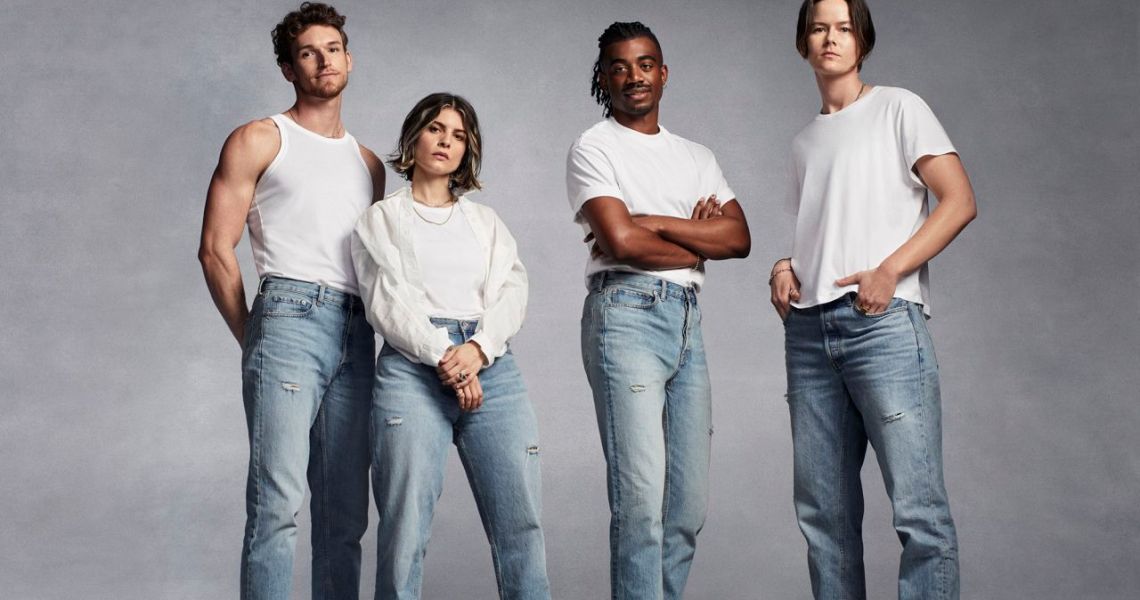Impact reports are omnipresent among fashion brands today. But due to the prominence of greenwashing, the confusion surrounding certifications and the lack of data surrounding commonly used statistics, many companies are still confused about how to begin to address sustainability initiatives.
With upcoming legislation and a growing consumer desire for sustainable products, environmental, social and corporate governance, or ESG, has been a priority for many fashion brands since 2021. For its part, Everlane is working to tie its ESG strategy to different areas of its business. In April, the brand came out with its latest impact report, offering a useful blueprint for larger brands to create more responsible business practices.
“We’ve spent the entirety of 2021 building a roadmap and a strategy to be able to solidify and set goals around various topic areas in a reasonable timeframe,” said Katina Boutis, director of sustainability at Everlane. The brand’s findings from its 2021 research showed that its ESG focus should be split into three goals: keep the Earth clean, which emphasizes biodiversity and restoration; keep the Earth cool, looking at how the brand can achieve net zero emissions; and do right by people, by supporting its workers across the value chain.
The need for sustainable business practices is a key priority for customers. EY’s 2021 Future Consumer Index from March 2022 showed that 70% of consumers believe company behavior is as important as what it sells. “What we’re finding now is that, as the pandemic is starting to abate in most parts of the world, that planet-first feeling is taking much more of a primacy position among some consumers,” said Jim Doucette, EY global consumer products and retail leader.
Everlane has a long history of working without undercutting its suppliers, a practice that is still largely common among brands and an area of ESG that is still sidelined by the industry. In 2011, Everlane was the first brand to show consumers exactly how much its T-shirts cost and why, paving the way for cost transparency in the business. Eventually, the brand expanded this price transparency to all of its products. However, this shift didn’t come until 2018 for most other fashion brands — that’s when the U.N.F.C.C.C., the U.N. climate change body, unveiled the Fashion Industry Charter for Climate action.
Everlane also stays away from controversial terminology like “sustainable” and maintains its focuses on lowering its impact, including by using more recycled materials across its synthetic and organic cotton apparel. In addition, the company works with suppliers to reduce its energy and water usage. And the brand has teamed with factories where fair wages, reasonable work hours and a safe work environment are a priority. It now conducts audits and shares stories about the factories to its customers on its factories page.
Materials, a key part of fashion production and a large contributor to excess waste, are also considered by the brand. It uses a limited quantity of quality materials to minimize mixing textiles, which can make recycling difficult. But this has led to problems — right now, the company is grappling with the organic cotton supply chain as strikes and a lack of supply in India have made access to the material difficult.
Ad position: web_incontent_pos1
“Organic cotton is still less than 1% of the total of all cotton produced globally, and there’s a lot of competition. We’ve seen accusations of fraud in the market as a result of a lot of interest in this material”, said Boutis. “Especially from a North American and E.U. sourcing perspective, the complications in China are also making the situation very challenging, contributing to pricing speculation.”
Last month, the Fordham University’s Responsible Business Coalition came out with a report on how businesses can scale their ESG commitments, based on over 40 industry-leading reports on sustainability in the fashion industry. Cara Smyth, founder of the Responsible Business Coalition and the lead on Fordham University’s report, said that more data from across the whole supply chain is needed to accurately track how an industry is shifting and which areas still need work.
“We’re looking at what is getting embedded into each vertical of the business. If we talk about preferred fibers, or agriculture or chemicals, what has to happen along the way? What’s that data layer that’s making us smarter and driving efficiencies [in theses areas]?” she said. The RBC report is focused on details and strategies because, as Smyth said, all of the areas across the business have to work together for the desired outcome.
Everlane has shown that having long-standing data can change the way a business operates and communicates its efforts to its consumers. Therefore, collecting data can empower brands to act on their ESG commitments.
According to Everlane, working with others is key to seeing the future described in its impact report. The brand has been working with partners like global non-profit Textile Exchange to develop its report. It recognizes that, while it is ahead in many areas of work within its supply chain, it’s important to expand its impact to others by helping them to improve their level of impact.
Ad position: web_incontent_pos2
“It’s about recognizing that there’s only so much we can do alone as an island of good. We want to infiltrate the rest of the industry and learn from others where we can,” said Boutis. “We see a lot of room for improvement and learning, but we also lead where we can from within.”




